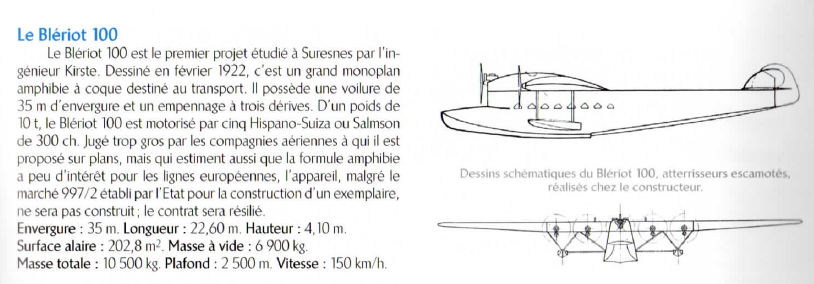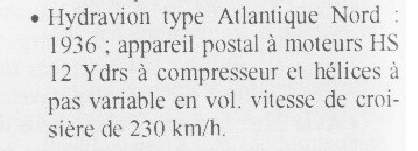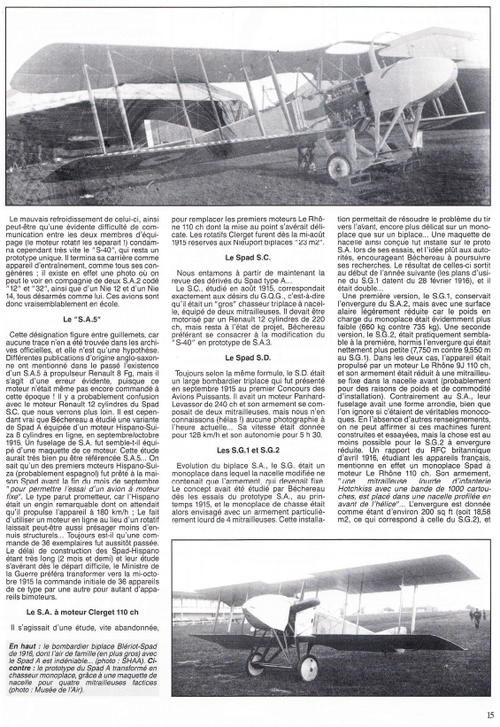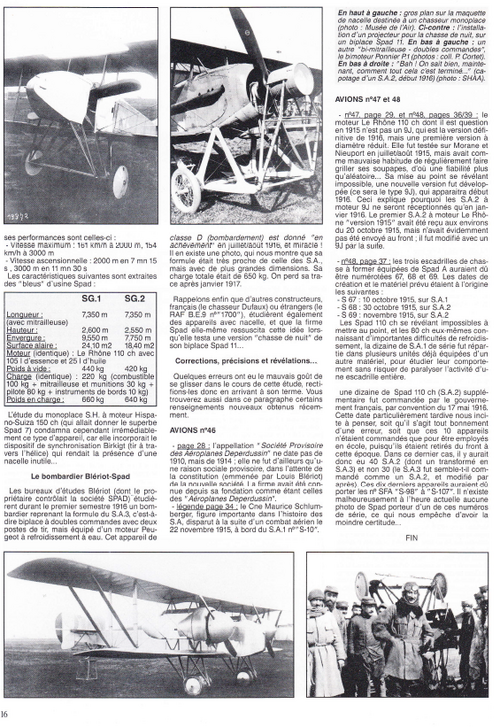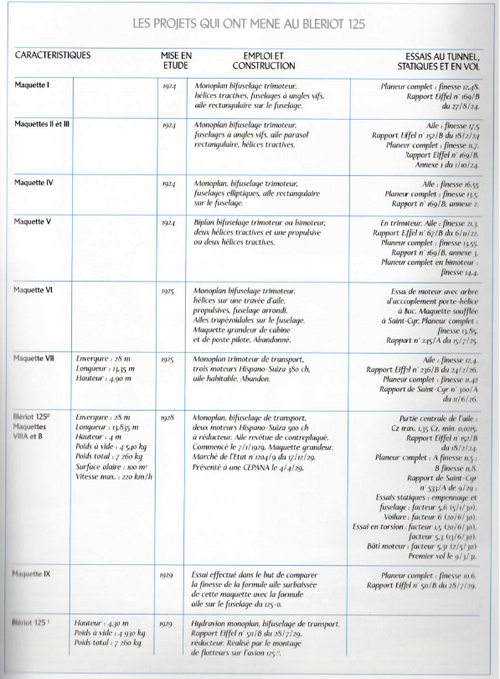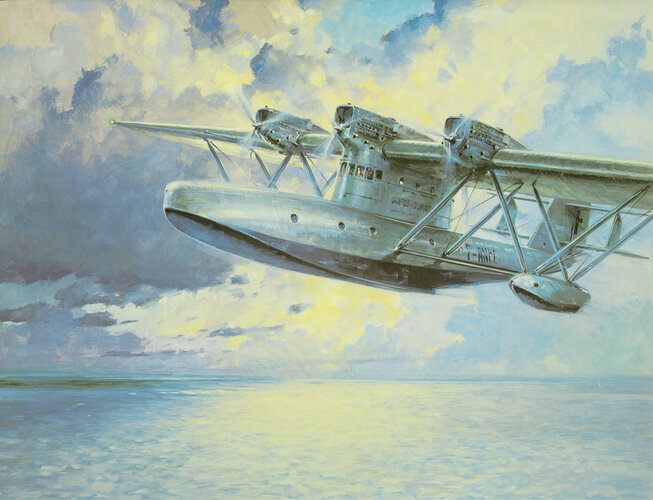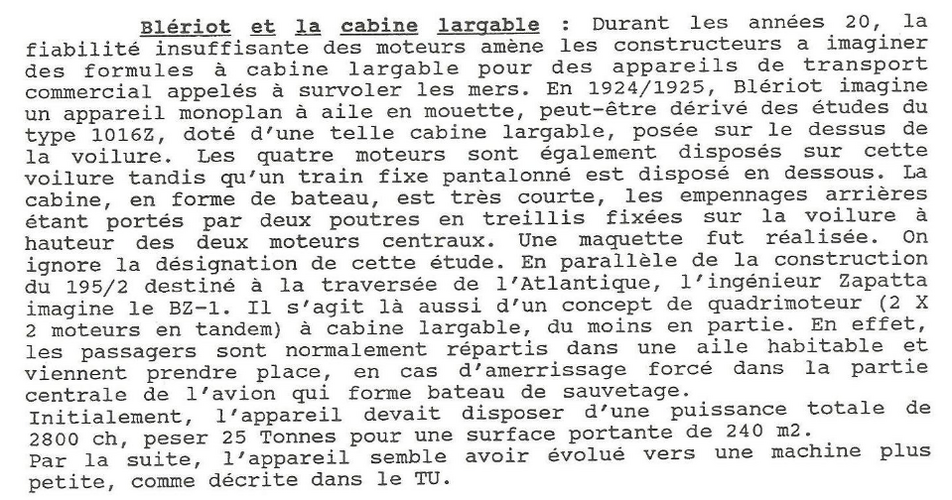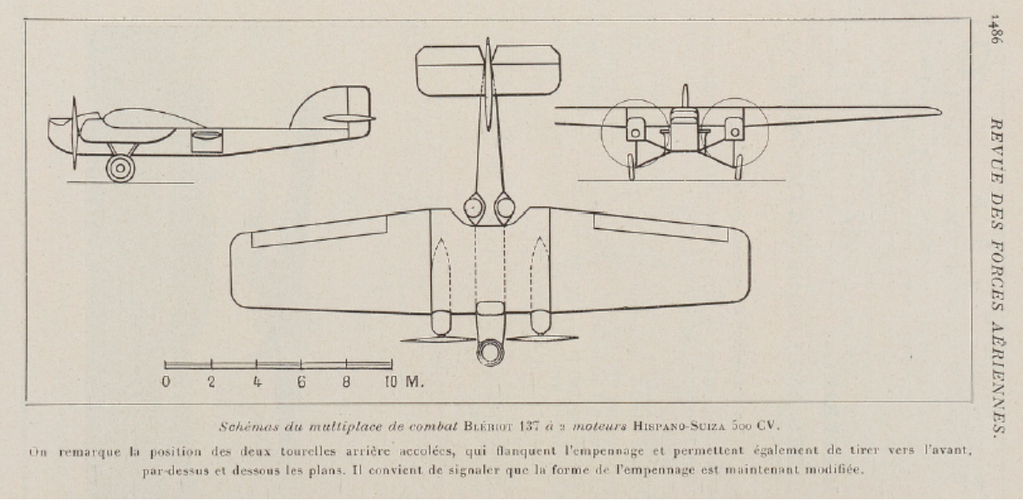You are using an out of date browser. It may not display this or other websites correctly.
You should upgrade or use an alternative browser.
You should upgrade or use an alternative browser.
Blériot and SPAD Projects and Prototypes
- Joined
- 26 May 2006
- Messages
- 34,555
- Reaction score
- 15,342
2- In 1934,Bleriot submitted a Proposal Project for a flying boat/seaplane south transatlantic
competition (Phase II),but it had a mystery designation ?,it was a four engined high-wing
flying boat.
It had 20 ton weight and 320 km/h estimated speed.
Les Paquebots Volants,Les hydravions transocéaniques français
Bazinga
I really should change my personal text
- Joined
- 14 December 2012
- Messages
- 290
- Reaction score
- 403
Hi all
I've found this model of Bleriot's studies !
This come from a museum in SURESNES 92150 fRANCE
Do you know more ! I don't have explanation !!!
Oeuvre : Précisions - construction ; sciences - techniques ; artisanat-industrie,maquette d’étude,(2011.3.1)"Modèle de soufflerie (Blériot type 125)", | Musée d'Histoire Urbaine et Sociale de Suresnes
Notice d'œuvre ''construction ; sciences - techniques ; artisanat-industrie,maquette d’étude,(2011.3.1)"Modèle de soufflerie (Blériot type 125)",'' du musée ''Musée d'Histoire Urbaine et Sociale de Suresnes''
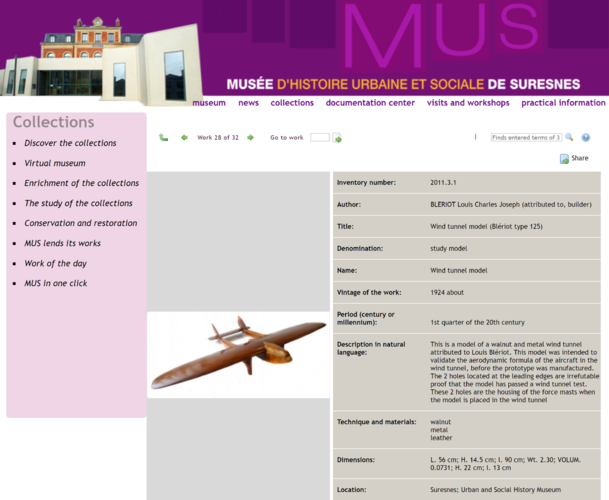
Bazinga
I really should change my personal text
- Joined
- 14 December 2012
- Messages
- 290
- Reaction score
- 403
I truly doubt it is a 125 model. If so, they went back to the drawing board after this testHi all
I've found this model of Bleriot's studies !
This come from a museum in SURESNES 92150 fRANCE
Do you know more ! I don't have explanation !!!Oeuvre : Précisions - construction ; sciences - techniques ; artisanat-industrie,maquette d’étude,(2011.3.1)"Modèle de soufflerie (Blériot type 125)", | Musée d'Histoire Urbaine et Sociale de Suresnes
Notice d'œuvre ''construction ; sciences - techniques ; artisanat-industrie,maquette d’étude,(2011.3.1)"Modèle de soufflerie (Blériot type 125)",'' du musée ''Musée d'Histoire Urbaine et Sociale de Suresnes''webmuseo.com
View attachment 647411
Deltafan
ACCESS: Top Secret
- Joined
- 8 May 2006
- Messages
- 1,690
- Reaction score
- 2,263
In the book L'envol du XXème siècle, Blériot-Aéronautique (Louis Blériot, Docavia Editions Larivière n°63, 2010) page 139, the text gives 9 wind tunnel models from 1924 to 1929 for the Blériot 125 (from I to IX, with one twin engines and one three engines variants for the V and one A and one B variants for the VIII). As the only twin engined models, the twin engined model V (1924) or one of the two twin engined model VIII (1928) could be our model. Because of the year it's maybe more the twin engined V.I truly doubt it is a 125 model. If so, they went back to the drawing board after this testHi all
I've found this model of Bleriot's studies !
This come from a museum in SURESNES 92150 fRANCE
Do you know more ! I don't have explanation !!!Oeuvre : Précisions - construction ; sciences - techniques ; artisanat-industrie,maquette d’étude,(2011.3.1)"Modèle de soufflerie (Blériot type 125)", | Musée d'Histoire Urbaine et Sociale de Suresnes
Notice d'œuvre ''construction ; sciences - techniques ; artisanat-industrie,maquette d’étude,(2011.3.1)"Modèle de soufflerie (Blériot type 125)",'' du musée ''Musée d'Histoire Urbaine et Sociale de Suresnes''webmuseo.com
View attachment 647411
But,
we can see a very slightly different Blériot 125 wind tunnel model here (alas, without model number too):
Une Histoire d'Homme IV | Sale n°1887 | Lot n°161 | Artcurial
Maybe our first wind model tunnel and this other wind tunnel model are the VIIIA and VIIIB (without to know which is A and which is B...)
Last edited:
Bazinga
I really should change my personal text
- Joined
- 14 December 2012
- Messages
- 290
- Reaction score
- 403
The model sold well imho.In the book L'envol du XXème siècle, Blériot-Aéronautique (Louis Blériot, Docavia Editions Larivière n°63, 2010) page 139, the text gives 9 wind tunnel models from 1924 to 1929 for the Blériot 125 (from I to IX, with one twin engines and one three engines variants for the V and one A and one B variants for the VIII). As the only twin engined models, the twin engined model V (1924) or one of the two twin engined model VIII (1928) could be our model. Because of the year it's maybe more the twin engined V.I truly doubt it is a 125 model. If so, they went back to the drawing board after this testHi all
I've found this model of Bleriot's studies !
This come from a museum in SURESNES 92150 fRANCE
Do you know more ! I don't have explanation !!!Oeuvre : Précisions - construction ; sciences - techniques ; artisanat-industrie,maquette d’étude,(2011.3.1)"Modèle de soufflerie (Blériot type 125)", | Musée d'Histoire Urbaine et Sociale de Suresnes
Notice d'œuvre ''construction ; sciences - techniques ; artisanat-industrie,maquette d’étude,(2011.3.1)"Modèle de soufflerie (Blériot type 125)",'' du musée ''Musée d'Histoire Urbaine et Sociale de Suresnes''webmuseo.com
View attachment 647411
But,
we can see a very slightly different Blériot 125 wind tunnel model here (alas, without model number too):
Une Histoire d'Homme IV | Sale n°1887 | Lot n°161 | Artcurial
Maybe our first wind model tunnel and this other wind tunnel model are the VIIIA and VIIIB (without to know which is A and which is B...)
Very good.
So we now know there were 9 different variants at least in the tunnel.
Interestingly ONERA puts the 125 in the tunnel in 1931.
Did they have their own tunnel?
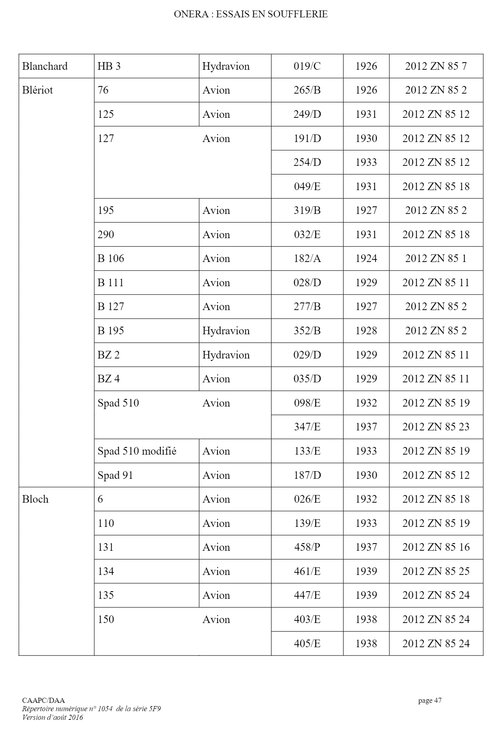
Deltafan
ACCESS: Top Secret
- Joined
- 8 May 2006
- Messages
- 1,690
- Reaction score
- 2,263
The model sold well imho.
Very good.
So we now know there were 9 different variants at least in the tunnel.
Interestingly ONERA puts the 125 in the tunnel in 1931.
Did they have their own tunnel?
View attachment 647525
ONERA was created in 1946 from other entities, including the Etablissement d'Expériences Techniques (EET) d'Issy-les-Moulineaux (near Paris)
The number 249/D 2012 ZN 85 12 shows us that the Blériot 125 was tested in the "little" wind tunnel of the EET.
- Joined
- 26 May 2006
- Messages
- 34,555
- Reaction score
- 15,342
In my files,
Bleriot designed a flying boat Project,it was never mentioned in this forum or the book; Docavia 63 - Bleriot Aeronautique
During next days,I will figure out the source with details.
Here it's,from TU 236.
Attachments
- Joined
- 26 May 2006
- Messages
- 34,555
- Reaction score
- 15,342
Attachments
- Joined
- 26 May 2006
- Messages
- 34,555
- Reaction score
- 15,342
In my files,
Bleriot designed a flying boat Project,it was never mentioned in this forum or the book; Docavia 63 - Bleriot Aeronautique
During next days,I will figure out the source with details.
Here it's,from TU 236.
I think that was taken the 400 series,and maybe it was Bleriot-450 ?.
Last edited:
- Joined
- 26 May 2006
- Messages
- 34,555
- Reaction score
- 15,342
Hi,
During the 1930s, Bleriot design a very strange aircraft,it was a single seat monoplane
fighter with forward swept wing and powered by one engine,it had a very smooth or
very flat fuselage,a twin tail fins and no rear wing.
This concept could be from 1934,and maybe was given the
designation Bleriot-380 ?,need confirm of course.
- Joined
- 26 May 2006
- Messages
- 34,555
- Reaction score
- 15,342
So we now know there were 9 different variants at least in the tunnel.
From the same source.
Attachments
- Joined
- 13 June 2007
- Messages
- 2,172
- Reaction score
- 3,058
- Joined
- 26 May 2006
- Messages
- 34,555
- Reaction score
- 15,342
Hi,
also during early 1920s,Bleriot developed a twin engined large cabin monoplane
Project,based on Model-1016Z.
Hi,
Blériot and the drop cabin: During the 1920s, the insufficient engine reliability leads manufacturers to imagine drop-cabin formulas for transport devices commercial called to fly over the seas. In 1924/1925, Blériot imagined a monoplane aircraft with a seagull wing, perhaps derived from studies by type 1016Z, equipped with such a drop cabin, placed on top of the wing. The four engines are also arranged on this wing, while a pantaloned fixed undercarriage is arranged below. The
cabin, in the shape of a boat, is very short, the rear stabilizers being carried by two lattice beams fixed to the wing at
height of the two central motors. A model was made. We
ignores the designation of this study. In parallel with the construction of the 195/2 intended for the crossing of the Atlantic, the engineer Zapatta
imagine the BZ-1. This is also a four-engine concept (2 X
2 engines in tandem) with drop cabin, at least in part. Indeed,
passengers are normally distributed in a living wing and
come to take place, in case of ditching in the part
power plant that forms a rescue boat.
Initially, the device was to have a total power of 2800 hp, weigh 25 tons for a bearing surface of 240 m2.
Subsequently, the device seems to have evolved into a smaller machine, as described in the TU.
Attachments
- Joined
- 26 May 2006
- Messages
- 34,555
- Reaction score
- 15,342
From l'Aeronautique journal August 1927,
here is a Bleriot three transatlantic aircraft project,the last two are a well known designs,fitted with
detachable boat in emergency case.


